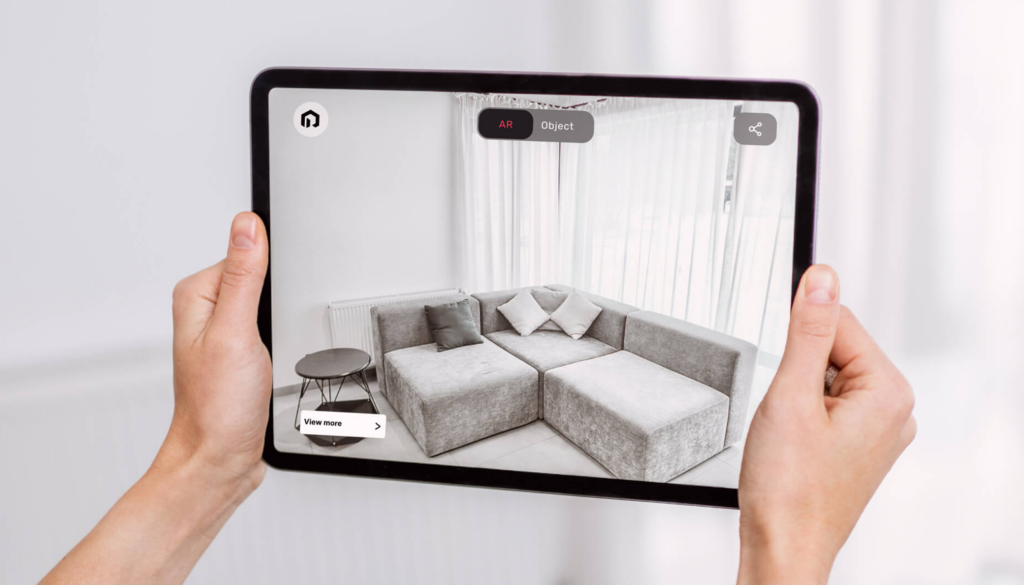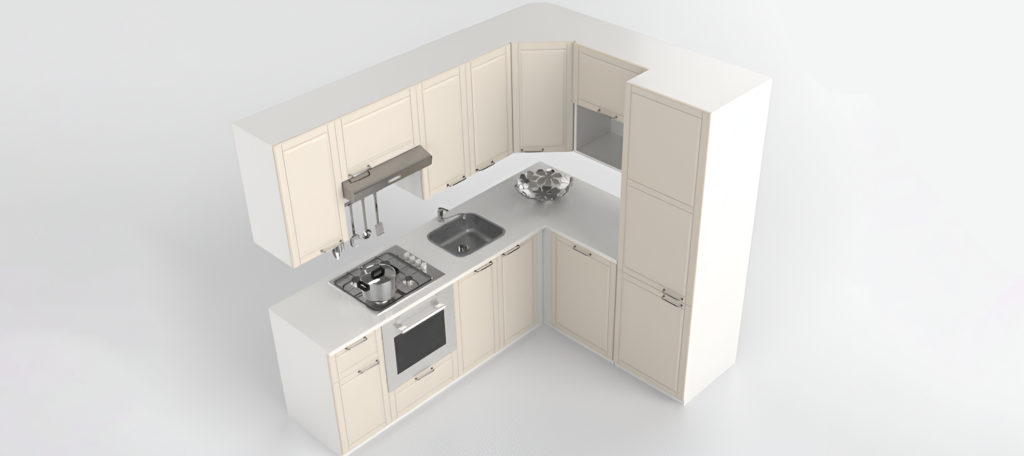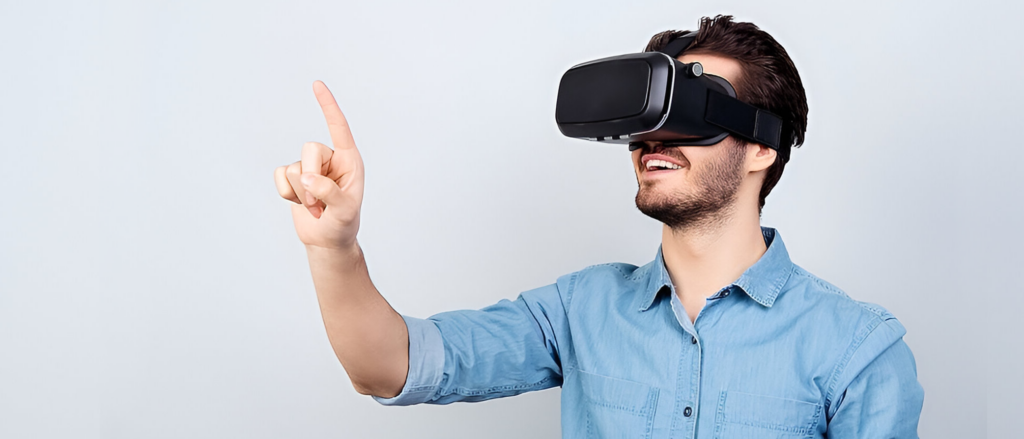Online shopping today is no longer a click-and-collect experience. It’s an immersive experience that takes you into the heart of the product. Spatial commerce has blurred the lines between digital and physical. Here, the humble shopping experiences are being redefined.
With the flick of a switch, products come alive in your own space. As Paul Miller, the VP of Forrester Research, perfectly puts it, “The future of virtual shopping is not just about seeing products online but experiencing them in your own space.” Spatial commerce is not about viewing items on a screen. It’s about conjuring their essence right there in your living room.
Spatial commerce is rewriting retail scripts, and it has also changed the rules of customer engagement. Spatial commerce is leaving consumers eager for more. But what is spatial commerce? Is it an experimental venture in the retail space, or has it dug its roots?
This blog is all about digging into what spatial commerce is and how it’s beneficial to you!
What is spatial commerce?
Picture this: you’re standing in your living room and eyeing that empty corner that has been empty for ages. You pull out your phone, and instead of scrolling through endless images on a tiny screen, tap a button.
A sleek new armchair comes right in that spot. You walk around it change its color with a swipe, and even sit down to see how it feels. This – all without leaving your house.
Welcome to spatial commerce because that’s exactly what this is. Virtual shopping experiences aren’t just transactions here; it’s an experience. Spatial commerce takes the best parts of online shopping – convenience, variety, and speed. It supercharges them with augmented reality and virtual reality. You can see the product, live it, and try it – without hitting the “buy now” button.

Spatial commerce is a game-changer, and companies like IKEA and Nike are already on board. They let you visualize products in your environment or even design your sneakers in a virtual workshop.
At the heart of this transformation, there are 3 main technologies:
Augmented Reality (AR)
Augmented reality technology superimposes digital elements onto the real world, allowing customers to visualize the product in their space. Shopify has added AR to its platform so that customers can see exactly how furniture will look in their space. How a decor- or even a T-shirt-might look and fit in their homes or on their bodies before they buy. This level of interactivity enhances customer confidence. It also alleviates the uncertainty associated with online transactions.
Virtual Reality (VR)
Along with the digital commerce concept, VR adds to it by creating virtual environments. The user can walk through and experience products in an intensely immersing environment. Imagine being able to enter a virtual store, be able to walk up and down the aisles, pick up items, and see how they would work in reality. All without having to leave your home. Though VR is still in its infancy, it has the potential to change retail.
3D Modeling
3D modeling is another critical component that plays a part in spatial and digital commerce. It provides the lifelike renderings that make AR and VR experiences possible. Companies like IKEA have leveraged 3D modeling to allow customers to place true-to-scale furniture in their rooms virtually. They can make more informed decisions this way.

As Tim Cook, Apple’s CEO, highlights – “Spatial computing is set to transform how we interact with the digital and physical world.” These technologies power the bridge between digital and physical worlds at their best.
Mirroring In-store experiences with Spatial Commerce
Spatial commerce bridges the gap between offline and online with its immersive and interactive spatially aware technologies. Let’s take a look at how this is possible by seeing how real-life statistics and examples back this.
Immersive product design:
Spatial commerce uses augmented reality (AR) and virtual reality (VR) to let customers interact with products in a virtual space, simulating the tactile experience of in-store shopping. This omnichannel experience leads to higher customer engagement and satisfaction.
Spatial commerce uses AR and VR for customer interaction in the virtual space. It simulates the tactile experience of in-store shopping.

For example, retail store managers asked whether beverage coolers would fit in the store. Coca-Cola solved its sales and B2B marketing problems by helping store owners visualize whether beverage coolers would fit in stores. A rather smart way of measuring space, isn’t it? According to infosysBPM, 61% of customers prefer AR-powered stores. They pay more for this sole experience.
Elevating the ‘Personal Touch’
Personalization has always been the USP that brands have offered – but they do it boldly now with spatial commerce. They analyze user experiences and behaviors in the virtual space. They deliver exactly what the customers want, which mimics the service customers get in physical stores.
Gucci’s AR shoe try-on is a masterstroke of the brand. Customers can now see how different shoes look on their feet before buying. This creates a connection between customers’ phones and actual stores. This can even motivate them to buy products that they didn’t plan to buy earlier.
Reducing Returns and Increasing Conversions
By giving customers the experience before purchase, spatial commerce reduces the tedious returns that are frustrating to no end! This increases conversion rates. According to ET retail, retailers have seen 25% reduction in return rates.
Wrapping up,
Spatial commerce is not just an evolution – it has changed the way we shop. It influences your customers through personalized, engaging, and informed virtual shopping experiences. There are some difficulties associated with this transition, though. Spatial commerce is both innovative and practical at the same time.
As Kara Swisher, a leading technology journalist, insightfully notes, “This is just the beginning. Spatial commerce will soon become as ubiquitous as online shopping is today.” The potential outcome it could have in the e-commerce world is huge, and it would be invigorating for spatial commerce. How consumers interact with the product, make decisions to buy, and engage with the brand. For those who adapt to spatial commerce, the future holds immense possibilities. It pushes into a new era wherein the virtual shopping experience is not merely transactional but truly experiential.
FAQ's
Spatial commerce differs from traditional eCommerce by offering an immersive experience where customers can virtually interact with products and see them in real environments, rather than relying solely on 2D images and descriptions.
AI helps personalize the shopping experience in spatial commerce by analyzing user preferences and behaviors. It can recommend products, create custom shopping experiences, and even assist with virtual styling or interior design suggestions.
Industries like fashion, furniture, home decor, automotive, and real estate benefit significantly from spatial commerce. It helps customers visualize products such as clothing, home decor, or cars in a virtual space before making a purchase.
Yes, spatial commerce is expected to play a significant role in the future of online shopping. As technology continues to evolve, it will become more accessible and integrated into everyday retail experiences, transforming the way people shop online.
Bhavya Shah
Bhavya Shah is a Business Analyst at iCreative Technologies. He specializes in the eCommerce consulting for all business domains. He is working hand-in-hand with developers and clients to produce requirements and specifications that accurately reflect business needs and are technologically achievable.





